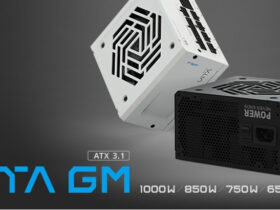5G: a microcosm that still scares. What trend and what results has this 2021 achieved? What is the prospect for 2022 and beyond? Questions that this study by IDTechEx is trying to answer.
What is it state from diffusion overall of 5G In the 2021?
5G is recognized as an important infrastructure for both developed and developing countries. By the end of 2021, 79 nations have commercialized 5G or are conducting trials of 5G. Digging further into which frequency it is most used – according to the IDTechEx study – is sub-6 GHz. This frequency band is used in over half of 5G deployments and commercial routes, with only a small percentage using mmWave. So far, only 9 countries have marketed 5G mmWave. However, this is not surprising given that, the main restriction of mmWave transmissions is their low propagation range. Telecom companies would not use the mmWave frequency band for national coverage. Looking at the telecom operators’ implementation strategies, we can see that low frequency bands (for example, 700 MHz) are used for national coverage, while bands below 6 GHz are used for city coverage, and mmWave is used for megacity hotspots.
UNITED STATES:
Side government: compared to other nations, the Federal Communications Commission (FCC) released the mmWave spectrum significantly earlier. Only earlier this year did the FCC finally release the sub-6 GHz frequency band. The ripping and replacement of Huawei equipment is still a top priority, with the government funding small-scale operators to do so. Given the lack of dominant 5G telecom equipment suppliers in the US, the FCC has also supported the development of Open RAN.
Side operator from telecommunications: Each operator holds a different portion of the 5G spectrum (for example: Verizon has the majority of mmWave holdings). Consequently, every 5G development strategy is different. Verizon, for example, has made significant investments in the development of mmWave, but T-Mobile has prioritized the expansion of the low and medium bands. T-Mobile currently has the most extensive midband coverage (using 2.5 GHz) as a result of its acquisition of Sprint. Following the auction of the C-band (frequency in the sub-6 GHz range) earlier this year, AT&T and Verizon both announced plans to launch the mid-band service this year, aiming to cover 100 million people by 2022.
CHINA:
The national development of 5G. The Ministry of Industry and Information Technology of the People’s Republic of China (MIIT) issued an action plan for the “navigation” of 5G applications (2021 2023) in April 2021, establishing a path for the promotion of 5G applications . Three key performance indicators (KPIs) were identified: Increase 5G user penetration to more than 40%, increase 5G network access traffic to more than 50%, and push 5G penetration in large enterprises to more than 35. %. MIIT has not yet released the mmWave spectrum, although it is expected to do so soon as the Chinese are preparing to use the 2022 Winter Olympics as a test bed for the mmWave rollout.
Side operator from telecommunications: One trend seen in China is that operators are working together to build shared network infrastructure. Here’s an example: By May 2021, China Telecom and China Unicom will jointly build 460,000 5G base stations.
Which is l’important development/trend technique In the 5G Now?
Even though 5G is commercialized, there are still many technical developments underway. In this article, IDTechEx discussed the 4 key points:
- The corsa for the radio more light Massive MIMO sub-6 GHz:
A crucial part of implementing a large-scale 5G network employing massive MIMO gear is that the radio must be lightweight and have a compact footprint, as these features will help operators save significant money on overall deployment. This is where silicon comes in. The performance of silicon will have a huge influence on essential aspects of a radio, such as connection, capacity, power consumption, product size and weight, and ultimately cost. In the 5G systems industry, all of these aspects are critical. In IDTechEx’s “5G Technology, Market and Forecasts 2022-2032” report, a comprehensive analysis of the Si industry and its impact on 5G development is provided.
- Distribution from small that
Small cells are proposed to address the challenge of the short signal propagation range caused by the high frequency. Creating an ultra-dense network by deploying multiple small cells plays a key role in 5G as it allows for the integration of the macro network and thus increases data capacity. Additionally, the deployment of small cells brings 5G to a variety of businesses, facilitating digital transformation (see this recent IDTechEx article for more information on how small cells are facilitating connected industries). Small cells can be classified into three types: femtocells, picocells and microcells, depending on their output power. Due to their smaller size than macro base stations, material choices and overall technology trend will differ from their macro infrastructure counterparts. More details on small cell technology trends and use cases can be found in the IDTechEx report, “5G Small Cells 2021-2031: Technologies, Markets, Forecasts“.
Outlook for 2022 and beyond?
The 5G market is about to take off. By the end of 2032, mobile consumer services are expected to generate $ 800 billion in revenue, and 5G macro infrastructure markets will expand seven times more than in 2020, according to IDTechEx. Other key points include:
- For many years to come, sub-6 GHz will be the primary frequency for distribution, while mmWave will require further technological advancements as well as a killer app to gain market, which will take years.
- The US-China relationship, as well as the development of Open RAN, will have an impact on the dynamics of the 5G system players.
- Si is critical to the advancement of 5G as its performance has a substantial impact on connection speed, capacity, power consumption, product size and weight, and ultimately the cost of a 5G system.
- Small cells will play an important role in enabling 5G to replace cable connectivity in the industrial environment.
- The mmWave research and development trend focuses on low-loss materials, power and heat management, and advanced packaging.














Leave a Reply
View Comments